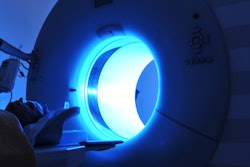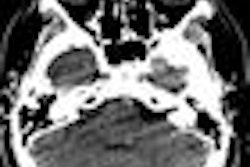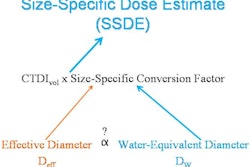SAN FRANCISCO - CT is unnecessary for staging gastric cancer owing to its poor sensitivity for diagnosing nodal involvement and the rarity of metastasis in patients with stage T1 disease, according to a Thursday presentation at the American Society of Clinical Oncology (ASCO) 2013 Gastrointestinal Cancers Symposium.
In their study, researchers from Kanagawa Cancer Center in Yokohama, Japan, examined more than 700 cases of confirmed clinical T1 gastric cancer diagnosed between 2000 and 2007; more than 500 of the patients underwent surgical resection. The group found not a single case of metastatic disease (M1) in the cohort, and fewer than 10% of patients had nodal involvement (N1), which 16-slice MDCT identified with less than 5% sensitivity.
"MDCT staging was considered unnecessary for staging gastric cancer because M1 diagnosis was extremely rare and its diagnosis of [nodal involvement] was unreliable," said Dr. Hirohito Fujikawa in his presentation.
Tumor-node-metastasis (TNM) staging is essential for determining the course of treatment for gastric cancers; however, T1 disease has a low metastatic potential and is almost curable by local treatment alone, Fujikawa explained.
For clinical T1 gastric cancer, the metastatic potential ranges from about 2% to 16%, he said. Local treatment is sufficient for the vast majority of T1 cases, with five-year survival rates greater than 90%.
The initial diagnosis of gastric cancer is based on upper gastrointestinal endoscopy and/or an upper gastrointestinal series, which also determines the depth of invasion of T1 or non-T1 cancer. Subsequently, under Japanese guidelines, TNM is evaluated by MDCT. But it is unclear whether MDCT is necessary for clinical T1 after endoscopy and/or the gastrointestinal series.
"The top priority is to determine the M factor because complete resection is necessary to cure gastric cancer, and M1 disease must be excluded as an indication for local treatment," he said. After metastasis is excluded, the next priority is determining nodal involvement.
For determining both M and N stages, CT is the only reliable modality, with reported sensitivities of around 80% and similar specificity. MRI, with sensitivity of less than 70% and specificity of 75%, isn't reliable for qualitative diagnosis, and the utility of endoscopic ultrasound is limited to organs surrounding the stomach, while laparoscopy is limited to peritoneal disease.
Thus, in Japan, "MDCT plays a central role to determine M and N staging," Fujikawa said.
The retrospective study analyzed patient records and data from 761 patients with histologically proven adenocarcinoma of the stomach, all diagnosed with clinical T1 disease by upper gastrointestinal endoscopy and imaging.
All patients were scanned on a 16-detector-row scanner (Aquilion 16, Toshiba Medical Systems) after ingestion of 400 mL of tap water and injection of 100 mL of nonionic iodinated contrast material. Scanning began 90 seconds after IV contrast injection. Slice thickness and reconstruction thickness were 7 mm or less.
Among the 761 patients, 236 underwent endoscopic submucosal dissection or endoscopic mucosal resection, 11 received secondary treatment, and 525 underwent surgical resection, Fujikawa said. Regional lymph nodes were considered to be involved by metastasis if they measured 8 mm or larger in the short-axis diameter at CT. The researchers examined the incidence of clinical M1 disease, and MDCT's accuracy for the diagnosis of positive nodal involvement.
Approximately 85% of the tumors were located in the middle or lower third of the stomach, and 96% were superficial lesions, he said. Histologic type was differentiated in 70% of lesions and undifferentiated in 30%.
No clinical M1 disease was found in the 761 patients, Fujikawa said. Among the 525 patients who underwent surgery, 484 were pathologically diagnosed as T1 (92.2%), 31 as pathological T2 (5.9%), five as pathological T3 (0.9%), and another five as pathological T4 (0.9%).
Clinical N1 was found in only eight patients (1.5%), while pathological N1 was observed in 45 (8.6%).
CT's accuracy was 90.3%, but its sensitivity was just 4.3%, Fujikawa said. Specificity was 98.7%, positive predictive value was 25%, and negative predictive value was 91.3%.
"Clinical M1 was extremely rare and nodal diagnosis was unreliable, with low sensitivity and low positive predictive value," Fujikawa said. Considering the number of cases misdiagnosed by CT, "patients could proceed to treatment immediately after diagnostic endoscopy" without the scans, he said, saving about $9 million a year currently spent on the scans in Japan.
Forgoing CT also enables clinicians to avoid risky treatments, since all T1 cases were ultimately diagnosed as N0M0, he said. MDCT is unnecessary for staging clinical T1 gastric cancers, considering the rarity of M1 disease and CT's unreliable diagnosis of nodal involvement, he concluded.



















